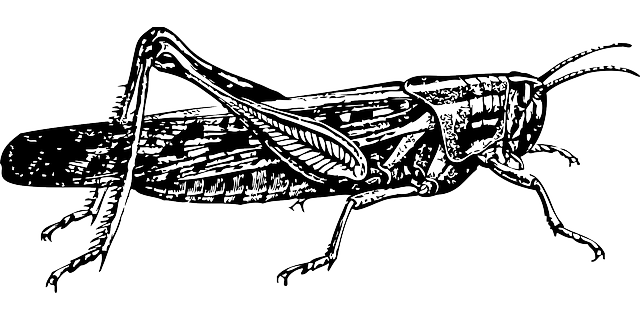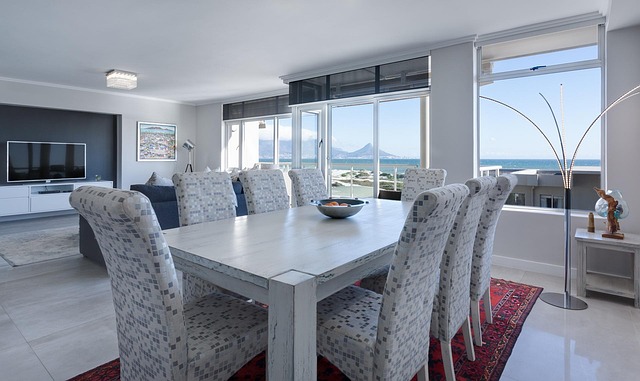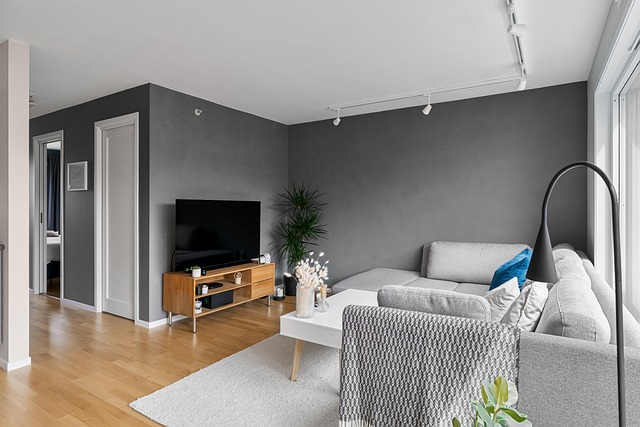Rodent infestations in apartments are a common problem requiring prompt action through effective Pest Control for Apartments. Mice and rats thrive due to their adaptability, high reproductive rates, and hiding spots within walls, floors, and pipes. In urban settings, they enter through cracks and gaps, causing structural damage, bad odors, electrical hazards, and mental distress. Early signs of infestation include droppings, tracks, chewed wires, holes, grease marks, and peculiar odors. Prevention strategies involve maintaining cleanliness, sealing entry points, regular inspections, proper ventilation, and using traps or repellents. Eco-friendly methods like physical barriers, live traps, and strategic trap placement are safer alternatives to toxic substances. Severe cases may require professional chemical solutions tailored by exterminators for specific pests and environments. A long-term rodent-free apartment environment is achieved through regular inspections, hygiene practices, natural repellents, and hiring professional Pest Control for Apartments when necessary.
Rodent control is a significant concern for apartment complexes, as these small creatures can quickly transform into major infestations. In this comprehensive guide, we explore effective strategies for managing and preventing rodent issues in apartments. From understanding common types of rodents and their behaviors to identifying signs of activity and implementing prevention tactics, we provide insights for both residents and property managers. Discover non-chemical approaches, chemical solutions, and the benefits of professional pest control services tailored for apartment environments. Learn how to maintain a rodent-free haven long-term with our expert advice on Pest Control for Apartments.
Understanding Rodent Infestations in Apartments

Rodent infestations in apartments are a common concern, requiring prompt and effective pest control for apartments. These small yet relentless creatures can swiftly take hold in shared living spaces due to their adaptability and high reproductive rates. Apartments offer numerous hiding spots—from walls and floors to utility pipes—providing ideal habitats for rodents like mice and rats.
Apartment complexes often face unique challenges when it comes to rodent control. Close quarters mean that one infested unit can quickly spread the problem to others. Additionally, shared spaces like hallways and common areas require a coordinated effort among residents and management to implement effective prevention and control strategies. Understanding these dynamics is crucial in addressing and preventing rodent infestations in apartment settings.
Common Types of Rodents and Their Behavior

In urban settings, especially in apartments, rodents like rats and mice are common pests. These small creatures are adept at infiltrating spaces, with an incredible ability to squeeze through tiny openings. Rats, known for their agility, can navigate pipes and walls, while mice, though smaller, possess exceptional climbing skills and a preference for finding food sources close to human habitats. Their behavior is driven by survival and reproduction; they seek out food, water, and shelter, often entering apartments through cracks, gaps around doors and windows, or even sewer systems. Once inside, rodents can quickly establish themselves, leading to persistent pest issues that require effective pest control for apartments.
Understanding their habits is crucial for implementing successful rodent control measures. Rats and mice are nocturnal creatures, preferring the cover of darkness to forage for food. They leave behind droppings and urines as markers, which can be early signs of an infestation. These pests are also known to gnaw on materials like wood, insulation, and cables, causing damage and potentially leading to fire hazards. Quick identification of their activity is key; regular inspections and maintaining a clean environment with sealed entry points can significantly deter these unwanted visitors.
The Impact of Rodents on Apartment Environments

Rodents, such as rats and mice, can significantly impact apartment environments if left unchecked. As they navigate through buildings, they leave behind droppings, which not only carry diseases but also contribute to bad odors. Their constant movement can cause structural damage to walls, floors, and ceilings, leading to costly repairs. Moreover, rodents are known to gnaw on electrical wires, posing a serious fire hazard in multi-dwelling units.
The presence of these pests can also negatively affect the mental health of residents. The stress and anxiety caused by constant noise and the sight of rodents can create an uncomfortable living space. Effective pest control for apartments becomes paramount to ensure a safe, healthy, and peaceful environment for all tenants.
Identifying Signs of Rodent Activity

Identifying signs of rodent activity is crucial in maintaining a pest-free apartment complex. Residents and property managers should be vigilant for any evidence of rodents, such as small droppings or tracks, as these are early indicators of an infestation. Regular inspections, especially in areas with potential food sources like kitchens and storage rooms, can help catch issues early.
Common signs include chewed wires, holes in walls or floors, and peculiar odors. Rodents also leave behind grease marks on surfaces and walls. By promptly recognizing these signals, apartment managers can implement effective pest control for apartments, ensuring a safe and comfortable living environment for residents.
Effective Prevention Strategies for Apartment Residents

To effectively prevent rodents from infesting your apartment, residents should implement a multi-faceted approach. Start by maintaining cleanliness and tidiness, ensuring regular trash collection and promptly cleaning any spills or food residue. Seal entry points like gaps in walls, floors, and windows with appropriate materials to deter intruders. Keep outdoor areas free of clutter and vegetation that could provide hiding spots for rodents. Additionally, proper ventilation and the use of traps or repellents can serve as powerful tools in pest control for apartments.
Regular inspection is key; checking for signs of rodent activity such as droppings, gnaw marks, or strange odors can help identify problems early. Residents should also encourage communication among neighbors to share information about any pest issues and collaborate on solutions. By combining these prevention strategies, apartment communities can create an environment that discourages rodents from taking up residence, promoting a safer and more hygienic living space for everyone.
Non-Chemical Approaches to Rodent Control

Non-chemical approaches offer a safer and more environmentally friendly way to manage rodent infestations in apartments. One effective method is the use of physical barriers, such as sealing entry points with steel wool, caulk, or mesh. This prevents rodents from entering buildings, focusing on areas around windows, doors, pipes, and utility lines where they commonly gain access.
Another popular non-chemical technique is the strategic placement of traps. Live traps are humanely designed to capture rodents without harming them, allowing for relocation instead of killing. Snap traps, when set correctly, can also be effective while avoiding the use of toxic substances. Regular monitoring and prompt removal of caught rodents help maintain a clean environment, making these methods valuable tools in comprehensive pest control for apartments.
Chemical Solutions for Advanced Rodent Infestations

In severe cases of rodent infestation within apartments, chemical solutions can offer advanced and effective pest control for apartments. These methods typically involve the application of specialized pesticides designed to target and eliminate rodents humanely. Professional exterminators utilize various chemicals, including baits and repellents, that are tailored to specific types of pests and living environments.
For optimal results, it’s crucial to consult with certified professionals who can identify entry points and implement strategic treatments. They employ advanced techniques to ensure the safety of residents and pets while effectively eradicating rodent populations. Regular maintenance and inspections are key to preventing reinfestations, making these chemical solutions a valuable tool in the ongoing battle against rodents in apartment settings.
Professional Pest Control Services for Apartments

Many apartment complexes face the challenge of rodent infestations, which can quickly become a significant issue. Professional pest control services are an effective solution for managing and eradicating rodents in apartment buildings. These experts have the knowledge and tools to identify and eliminate rodents humanely and efficiently.
Appointing a professional pest control team offers several advantages. They employ safe and eco-friendly methods, ensuring the well-being of residents and the environment. Their comprehensive treatments involve targeted baiting, trapping, and sealing entry points, providing long-lasting results. With their expertise, apartment managers can rest assured that their properties are free from rodents, maintaining a clean and healthy living space for all tenants.
Maintaining a Rodent-Free Apartment Long-Term

Maintaining a rodent-free apartment long-term requires a multifaceted approach. Regular inspections are key; identifying potential entry points and signs of infestation early can prevent an issue from escalating. Simple yet effective measures like sealing gaps around pipes, wiring, and doors, as well as keeping garbage bins secure, significantly deter rodents.
Implementing good hygiene practices is equally vital. Promptly cleaning up spills, storing food in airtight containers, and sweeping floors regularly creates an unappealing environment for pests. Additionally, using natural repellents like mint or peppermint oil around entry points can serve as a non-toxic barrier. For persistent issues, consider hiring professionals specializing in pest control for apartments to ensure comprehensive and safe resolution.
